

Note: This work was performed by Dr. Wiese while he was with the Corporate Research division of Reynolds Metals Company.
Background
A major concern of the modern automotive passenger is safety. The conventional wisdom is that larger cars are safer than smaller cars, and there is evidence to back this opinion. However, the question arises as to what larger actually means.
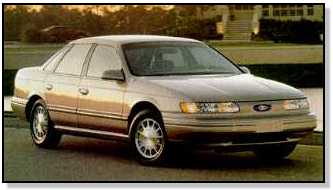
Traditionally, automobiles have been constructed mainly of steel. Given this fact, a larger sized car implies a heavier car. More enclosed volume requires more steel. It was the intention of this work to determine if the improved safety is associated with the larger dimensional size of the automobile rather than its increased mass. Such would be the case with an aluminum vehicle.
Until recent years, this theory could not be economically tested. A fully instrumented crash test could cost over a million dollars. The development of a single aluminum prototype could cost hundreds of thousands of dollars. On the other hand, this goal can be accomplished using computer modeling.
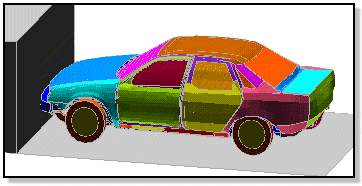
A common test used to evaluate new vehicles, mandated by the federal government, is the frontal impact test. A 35 MPH frontal impact computer model of the Ford Taurus was developed and calibrated versus actual tests for the National Highway Traffic Safety Administration (NHTSA) by EASi Engineering in Detroit, Michigan. This was later improved by the National Crash Analysis Center (NCAC) at George Washington University outside of Washington, DC.
A project was undertaken along with the NCAC to examine the safety of an aluminum Taurus vs. the original steel version. The existing computer model could be used with suitable conversion of the steel body panels and structural members to aluminum.
Steel Model Validation
The NCAC incorporated airbag and dummy models into the vehicle, and calibrated them using the steel version of the vehicle model along with actual crash test data.
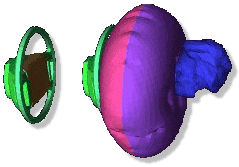
|

|
The vehicle model itself is shown below. Since it was meant for frontal impact, the level of detail in the front was much higher than that of the rear. It can be seen that many more components were included in the front of the vehicle, and the size of the elements in the front were much smaller than those of the rear. See the simulation process page for a general description of finite elements.
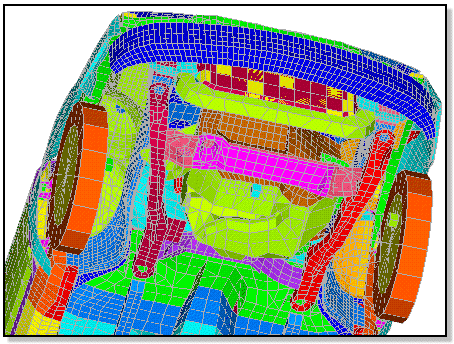
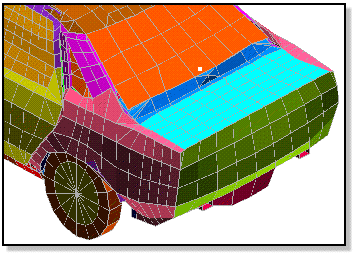
While an almost unlimited amount of data was available from the simulations, one of the most important numbers was the Head Injury Criterion (HIC) score. This number was calculated from the decelerations of the head during impact. For the validation runs, the simulated HIC was 427 vs. 422 for the recorded test. This meant that the dummy and airbag models were correct. The next step was to convert the vehicle to aluminum and place the airbag and dummy into that model.
|
Copyright © 2000 - 2018 Nonlinear Engineering, LLC |

|
Page last updated 05 July 2018 |